Review: Sonoro Maestro and Orchestra – The German audio company Sonoro is known for its multifunctional and solidly built table radios, which only need a power cord to make music. About a year ago Sonoro launched the Maestro. The Maestro is an amplifier, tuner, DA converter, streamer and CD player and the user only needs to connect two passive speakers. Apparently Sonoro also wants to participate in the market of separate audio components because the company released its first speakers this summer. The Orchestra is a passive two-way bass reflex speaker that should be the perfect companion for the Maestro. In this test we let the Maestro conduct the Orchestra. How is the attempt by table radio brand Sonoro to compete in the crowded market of individual audio components?
Sonoro: German audio company specializing in table radios
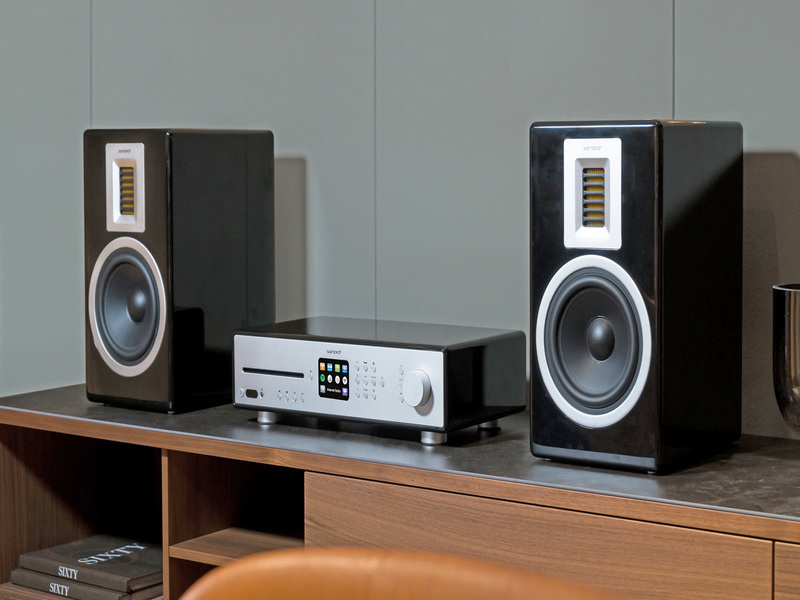
The audio company Sonoro, founded in 2006 and based in Neuss, Germany, mainly produces table radios, all of which are equipped with a multitude of functions. The company makes mono models, intended for a bedside table, but also more ambitious stereo models. About three months ago we had the Prestige model at home. The Prestige is a complete three-way system with built-in speakers. For a table radio, the Prestige has a very good sound and we were impressed by the amount of functions and the pleasant operation. Also read our review about the Sonoro Prestige .
Sonoro’s ambitions apparently extend beyond the construction of table radios. About a year ago, the company released the Maestro , a two-channel amplifier with digital and analog connections (also a turntable input for mm cartridges) and the ability to connect to a computer network. The Maestro is equipped with a CD drive, an FM tuner and DAB / DAB + and, like the Prestige, is also richly equipped with streaming functions, i.e. UPnP with support of the common file formats and codecs, Bluetooth connectivity (aptX, bi-directional ), support of the mainstream streaming services and internet radio.
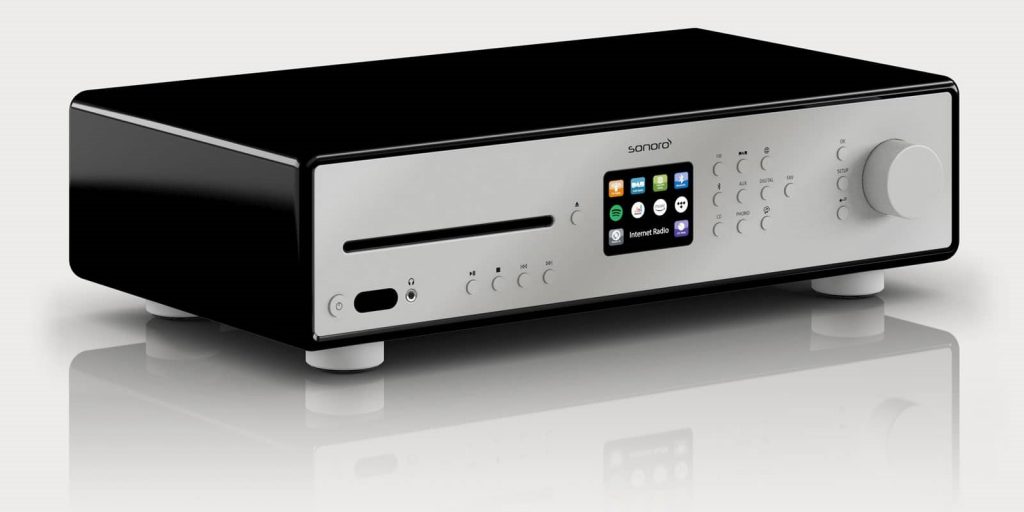
The biggest difference between the Prestige and the Maestro is therefore the lack of speakers. Sonoro had no loudspeakers in its portfolio when the Maestro was released. In the first instance, an owner of the Maestro would have to connect speakers from another brand. However, Sonoro recently released its first speakers called Orchestra . The new Orchestra is a passive two-way bass reflex speaker. With this Sonoro has thus brought a complete hi-fi system consisting of separate components to the market.
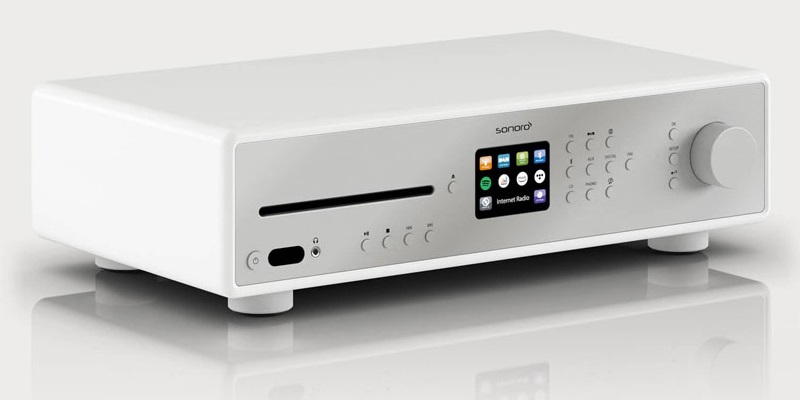
No, the Maestro is not intended for placement on a bedside table. With the Maestro, Sonoro’s ambition extends beyond placement on a bedside table. Clock radios also do not have a two-channel class D amplifier on board that can deliver 100 Watts at eight Ohms and 170 Watts at four Ohms with a frequency range of 20 Hz to 20 kHz. The Maestro also features a turntable input for mm elements. Most users do not have a turntable next to their bed.
Another prominent difference from Sonoro’s other models is the fact that the Maestro has the ability to adapt the sound to the room. A new room optimization app allows the user to adapt the Maestro’s sound to the acoustic conditions of the listening room. The app uses the built-in microphones of the smartphone for the measurement and therefore currently only works with Apple’s iPhones, because, according to the manufacturer, only then can proper operation be guaranteed. We did not have an iPhone available, so we did not test this function.

For the rest, Sonoro’s Maestro is a feast of recognition for those who have already played with the Prestige or another stereo model from Sonoro. A 2.8-inch TFT color screen is placed centrally on the front. The radio enthusiast can choose from three types of radio. First of all, the classic analog FM radio (87.5 MHz – 108 MHz). An extendable antenna is of course included. Then there is digital radio in the form of DAB / DAB + (Band III, 174,928 MHz – 239,200 MHz) and internet radio with which thousands of stations can be listened to worldwide. The user can search automatically or manually. Ten stations per type of radio can be stored for quick access.
Access to the internet is via an RJ-45 LAN connection or via WiFi (with support for WEP, WPA, WPA2 (PSK) and WPS). A setup wizard links the Maestro to wireless LAN.
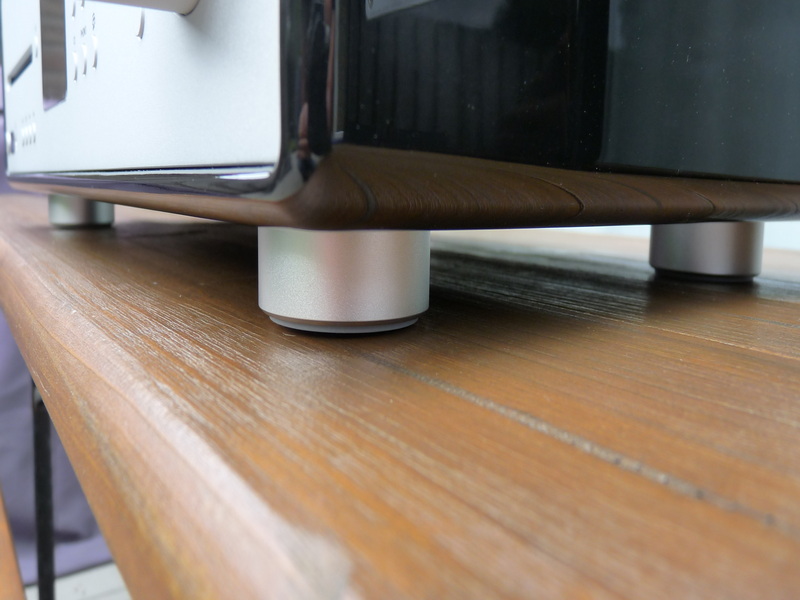
The Maestro also supports the streaming services Spotify, Tidal, Napster, Deezer, Qobuz and Amazon Music, but the user can also send music to the Prestige using DLNA, UPnP or bluetooth (with support for aptX, A2DP, AVRCP and HSP). Bluetooth also works bi-directional. This means that a music signal can be sent from a smartphone to the Maestro and a music signal from the Maestro to a wireless headset at the same time. Preferences can also be saved with regard to streaming services.
To the left of the front of the Maestro is a slot-in CD drive that can read ordinary pressed CDs, CD-Rs and CD-RWs.
Sonoro Maestro: connections
The following connections can be found on the back of the Maestro:
- A cinch line input with a sensitivity of 1 Volt
- A 3.5 millimeter jack plug input with a sensitivity of 300 mVolt
- An optical input (Toslink) that accepts PCM signal up to a resolution of 24-bit / 96 kHz
- A coaxial input (S / PDIF), also for PCM signal up to 24-bit / 96 kHz
- A turntable input for mm elements with a sensitivity of 5 mVolt (47 kOhm)
- A preamplifier output that can deliver up to 2 Volt rms (1.5 kOhm). This output is configurable and can therefore also be used to connect a subwoofer, for example. The Maestrro offers the possibility to set the crossover frequency so that the subwoofer is seamlessly integrated into the system.
- A USB input that can play FAT16 and FAT32 storage media. According to the manual, the Maestro (just like the Prestige) can only read USB sticks, not USB HDDs. Many modern streamers can read the folder structure of large USB storage media with NTFS file system. The Maestro cannot do that. NB: this is purely about the file system, not the storage capacity. A 1 TB USB stick formatted in FAT32 was read and played without any hitches.
- A single pair of speaker terminals, suitable for speakers between four ohms and sixteen ohms.
A 3.5 millimeter jack plug connection for headphones is placed on the front.
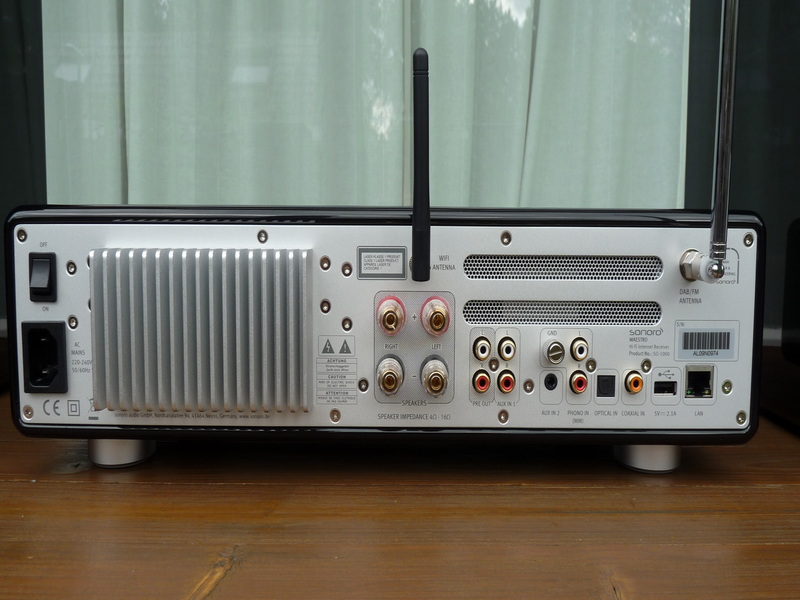
In a nutshell, the Maestro is a fairly fully equipped amplifier with the necessary built-in sources that has enough connections to connect other sources. If you don’t want to play vinyl, you don’t need any other components apart from loudspeakers (we’ll leave cassette tapes and tape reels out of consideration). The suggested retail price of the Maestro is 1,299 euros and it is available in black and white and in a matte graphite version.
We are going to take a closer look at the Orchestra.
Sonoro Orchestra: two-way bass reflex speaker with AMT
The Orchestra is neither small nor light. Sonoro’s first speaker measures 210 x 288 x 365 millimeters (W x D x H) and weighs approximately ten kilograms. Considering its dimensions and weight, the loudspeaker must be placed on a solid and stable surface. The bass port is located on the back and Sonoro supplies foam plugs to dampen the bass reproduction if necessary.
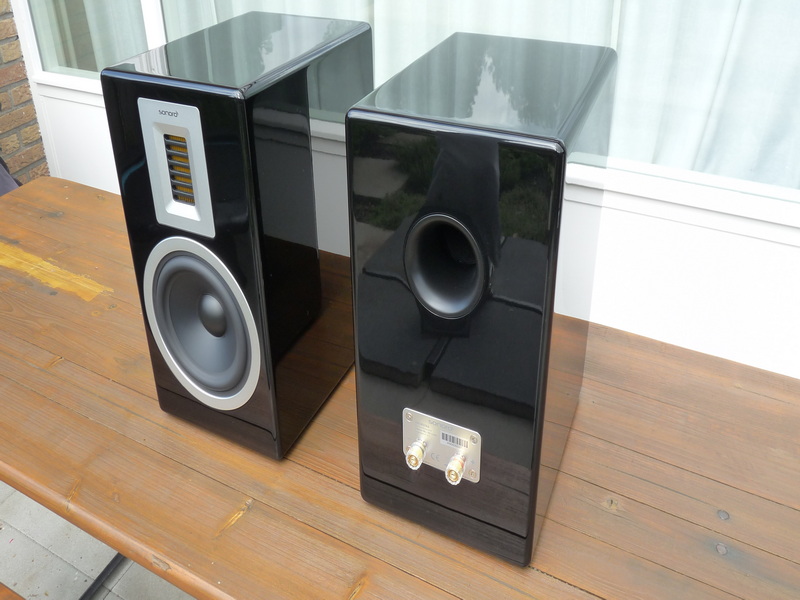
The rectangular cabinet is made by hand from MDF and has the necessary internal reinforcements in the form of a matrix. The corner lines are rounded. The cabinet is finished in high gloss, optionally black, white or matt graphite. Sonoro not only packs the Orchestras very thoroughly, but also supplies a pair of gloves so that the speakers remain clean when unpacking and setting up. Yes, the black version, which is in our test room, is sensitive to fingerprints and dust, like all black high-gloss surfaces.
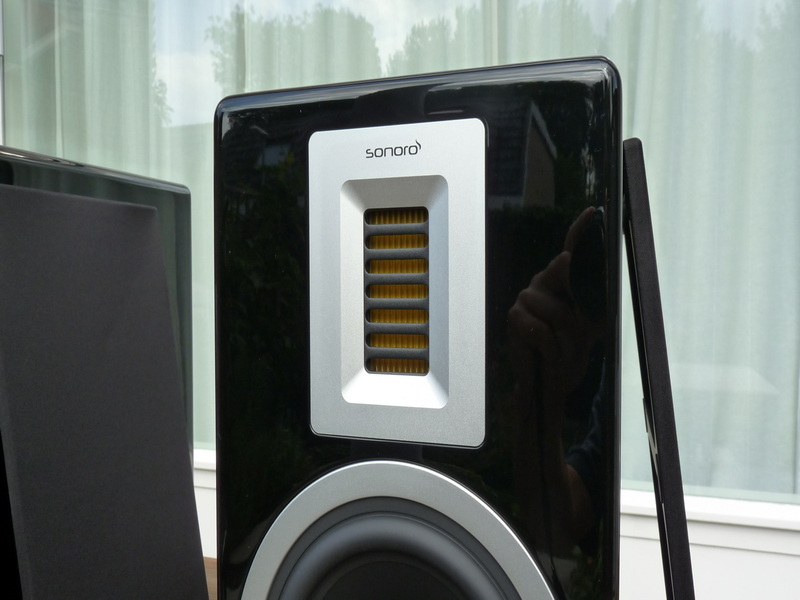
The Orchestra has a detachable and magnetically attached cover. In a room with a little dimmed light, the loudspeaker is hardly noticeable when the fronts are in place. When the covers are removed, the aluminum frame of the drivers is visible, but that does not alter the fact that the Orchestra has a modest appearance, even without the cover. The loudspeaker does not seem to want to attract attention with its appearance
The Orchestra’s mid-range / woofer has a diameter of 150 millimeters and is fitted with a PE-coated paper cone. The tweeter is an Air Motion Transformer (AMT) with a neodymium magnet. The active surface is 85 cm2. AMTs differ from ‘conventional’ dome tweeters in that AMTs have a very light membrane and a larger surface to move air. AMTs are therefore able to pick up lower than dome tweeters, allowing a designer to lower the crossover frequency between drivers, below the frequency band in which human hearing is most sensitive. Sonoro specifies a frequency range from 44 Hz to 28 kHz (at level -6 dB). The specified sensitivity is 85 dB (2.83 Volt / 1 meter) and the impedance is four ohms.
Some photos from the manufacturer show a setup that violates the directions in the included Orchestra manual. Because the bass port is placed at the back, the Orchestra should be at least half a meter away from the wall behind it. Speakers that have a bass port on the back cannot be placed tightly against a wall. It is therefore not advisable to place the Orchestras on a sideboard. The distance to the rear wall is then too small, even with foam plugs in the bass port. It is not for the first time that we have to note that a manufacturer’s Marketing and Photography Department understands nothing about technology and acoustics.
Finally, the Orchestra features a single pair of sturdy insulated speaker terminals that accept banana plugs and bare wire.
The Orchestra is available in a black, white or matt graphite version and costs 1,000 euros per pair.
We are going to connect the components in our test environment.
We have connected the Maestro and the Orchestras and the Maestro is connected to a Gigabit switch with a UTP cable. Music signal alternately came from a Windows laptop, an Android smartphone, an Android tablet, a 1 TB USB stick and a modified Sonos Connect. All sources are provided with bit-perfect ripped WAV files and MP3 files. The Orchestras are three to four meters apart
We have also tested the Sonoro components with other components of which we know the sound well. The Maestro has for a while driven floorstanders from the Swiss Piega, model Premium 7. The Orchestras have also been driven for a while by a NAD 7600 and by a Rotel A11 Tribute . A review about the latter amplifier will be published in this medium shortly.
Sonoro Maestro and Orchestra: operation
The Sonoro Maestro can be operated in three ways, just like the recently tested Prestige:
- With the buttons on the front.
- With the beautiful and logically arranged plastic IR remote control that is included in the delivery package.
- With a (free) app from Frontier Silicon called Undock.
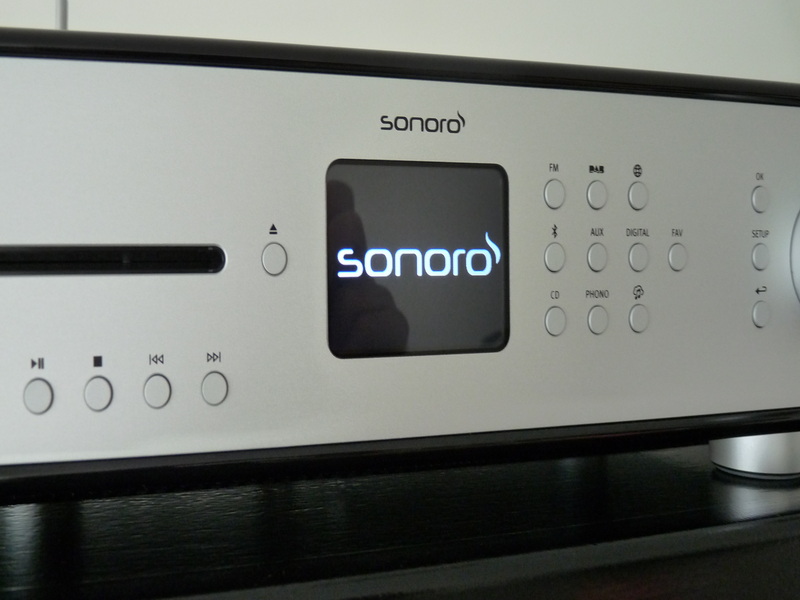
Play it, Maestro.
While we are writing this review with the Windows laptop, with the same Windows laptop we are sending locally stored music files via UPnP to the Maestro. The operation is no different from the operation of the Prestige. The playback is stutter-free, gapless playback is supported. We can also use UPnP without a laptop. The Maestro sees the Synology NAS on the network and we can scroll through the folder structure of the NAS, simply with the buttons on the front of the Maestro or with the IR remote control. The file name, elapsed time and total time of the music track being played are shown in the display of the Maestro. Sonoro provides a clear printed manual, but everything works so intuitively that we do not need a manual for the primary operation of the Maestro.
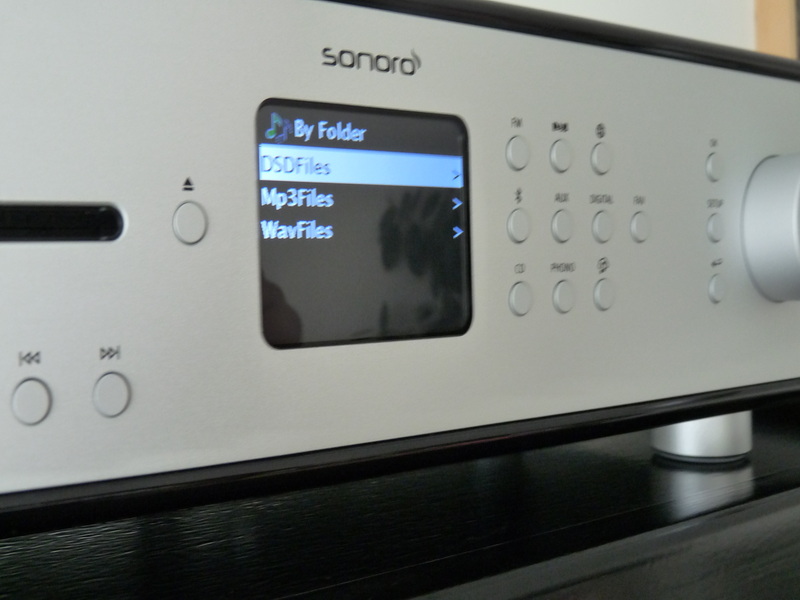
We alternately take the Android smartphone and tablet and play music via bluetooth. As with UPnP, the file name of the selected music track is visible in the display of the Maestro. The elapsed time and total time of the selected song are also displayed. The bluetooth connection is free of stutter, as it should be. Music can be paused or resumed with the playback device (smartphone or tablet), but also with the IR remote control.
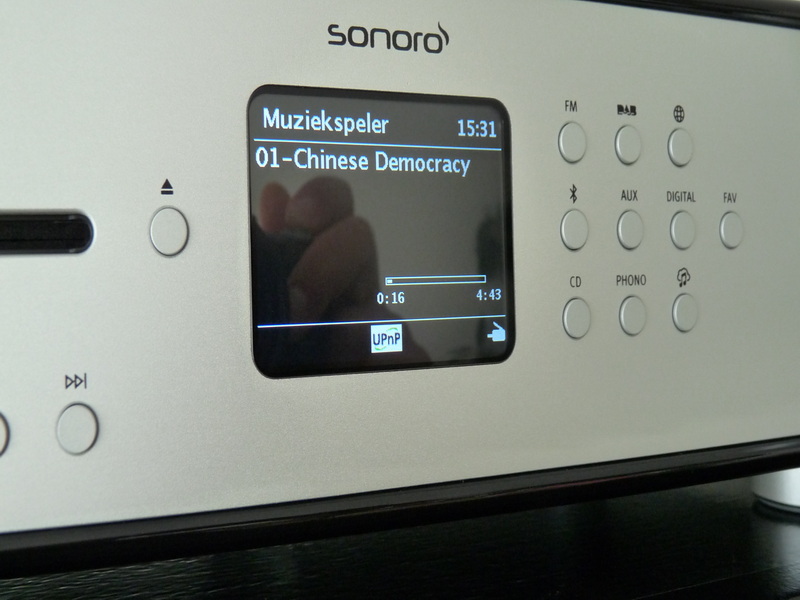
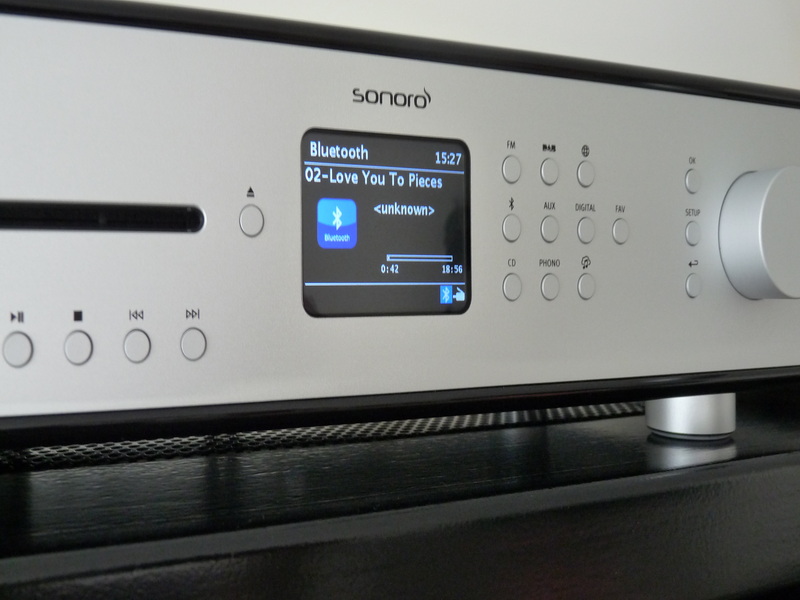
The radio enthusiast is served with the Maestro’s three types of radio. FM radio sounds on average the clearest and most open, followed by DAB. In terms of sound, internet radio is the least of the three types of radio, but that is due to the mediocre bitrate of internet radio. Internet radio is always compressed to save bandwidth and sometimes even very highly compressed. The strong compression is not always noticeable with mono radios and cheap table radios, but when using the Maestro (and also earlier with the Prestige) internet radio falls straight through the basket. The display level of the Maestro is head and shoulders above the level of internet radio. That does not mean that internet radio is a nice addition.
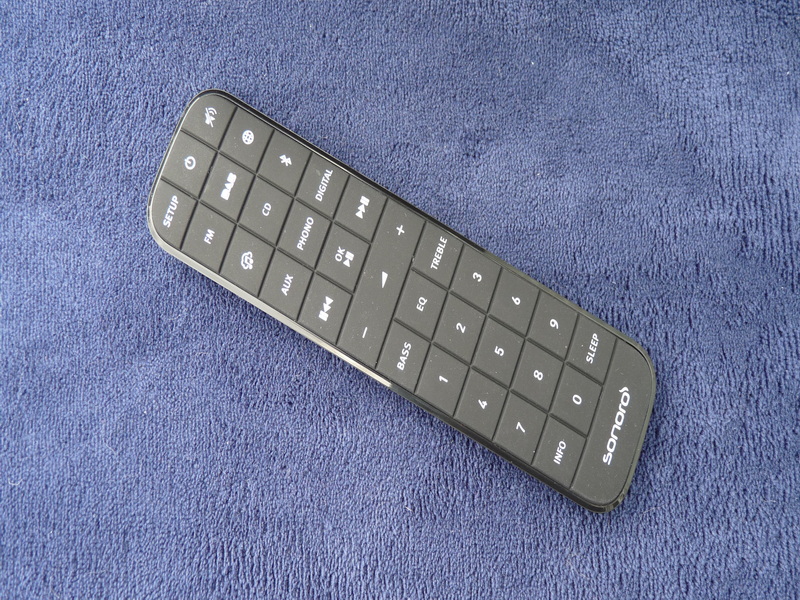
Although all the CDs in the house are bit-perfect ripped and all music tracks are stored as WAV files, we also play with the CD drive of the Maestro. The running gear does its job inaudibly. The addition of a CD drive is nice and handy because not everyone will have their entire CD collection bit-perfect ripped.
Just like the Prestige, the Maestro is a Swiss army knife. When it comes to functionality, it leaves nothing to be desired for the user. The Maestro is not only an amplifier with analog and digital inputs, but also a very complete and fine working all-round tuner and streamer, which can also play CDs.
Sonoro Maestro and Orchestra: transparent and neutral sound with a very good bass response
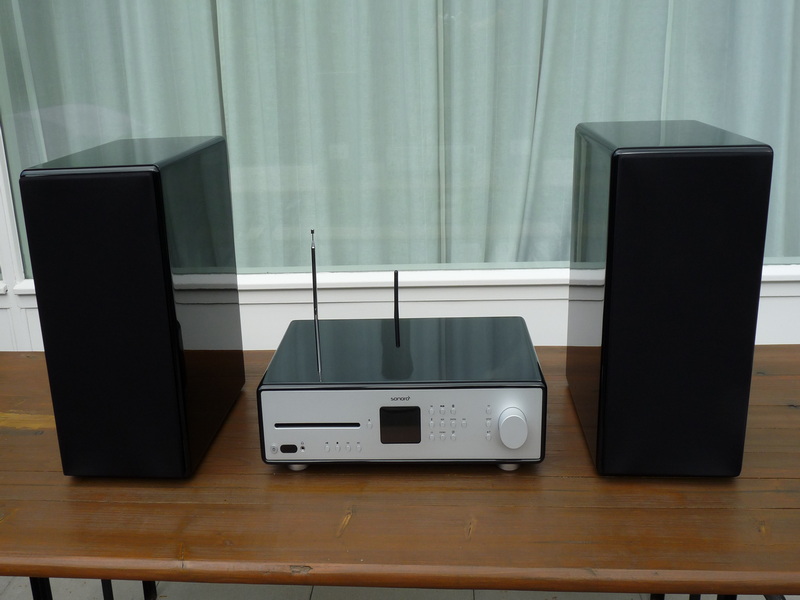
We play the first track of the Porcupine Tree album “Voyage 34”. We are taken on a journey through a sound landscape. Or are we flying over the landscape? There is always something to be said about metaphors. The bass guitar that starts after approx. 2 min. 15 sec. comes very deep. The Maestro keeps the sound landscape upright, both when conducting the Orchestras and when controlling the floor standing Piegas.
We are surprised by the Orchestras’ bass response. If we consider the format of the Orchestras and the frequency range specified by the manufacturer, the bass response is above expectations, both in quantity and quality. The reproduction of the low tones in the music on “Voyage 34” is a big challenge and many speakers fail here, including floorstanders. The bass reproduction may be too thin or lean towards woolly, or slightly oppress other tonal areas. The Orchestras simply sound much bigger than they are. The bass reproduction puts many a feeding stand to the crown. The relatively small Orchestras reproduce the bass guitar on “Voyage 34” extremely well without sacrificing other tonal areas. Yes, the Piegas do a little better, but the Premium 7 is much bigger and much more expensive.
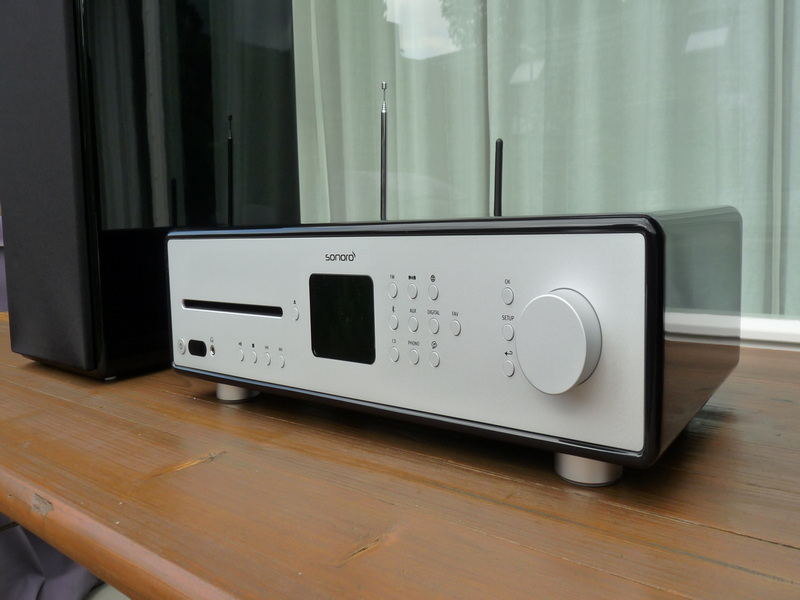
Both the Maestro and the Orchestra have an open, neutral and transparent sound. The sound is released from the speakers and the width of the presented soundscapes is greater than the distance between the speakers. The sound is wall-to-wall and instruments can be placed across the width. The stereo image is beautiful. Voices sound realistic and can be placed in the room. We perform the Maestro and Orchestras all kinds of music and everything is swallowed without a murmur. The sound of a fortissimo playing orchestra or a heavy metal band never stops. Subtle accents are neatly reproduced, even when the volume is turned up a little further. The Maestro does not get more than hand warm and never gets stuffy.
Also striking is the good cooperation between the midrange / woofer and the AMT. We don’t know exactly where the AMT picks up, but it sounds like it’s somewhere at the bottom of the mid-range. An AMT can pick up lower than a dome tweeter and thus can output a much wider bandwidth. The result in concrete terms? The reproduction of treble and midrange is relaxed. Cymbals, bells and brass wind instruments sound realistic.
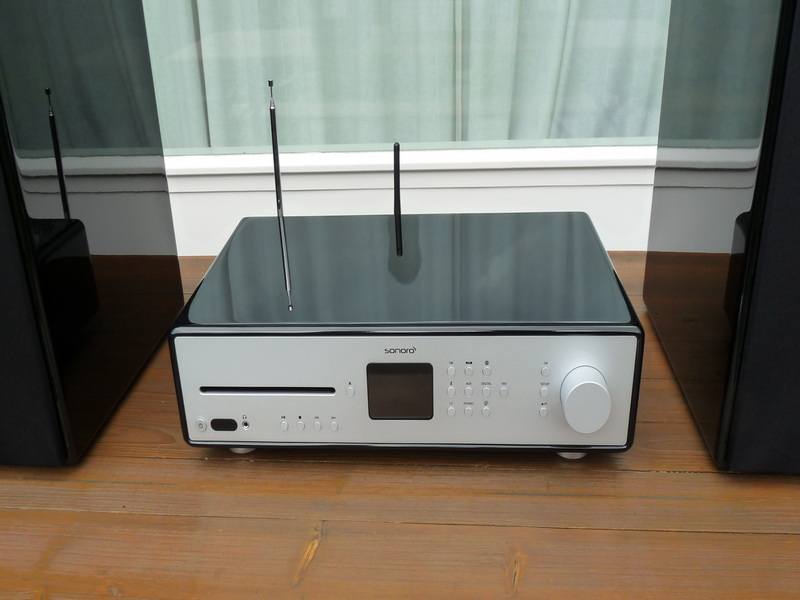
We play “Love You To Pieces” from No-man’s album “Love You To Bits”. The low response from the sixth minute onwards forms another hurdle that is overcome by the Maestro and the Orchestras without too much effort. Tim Bowness’s voice is hypnotic. The bright-sounding synthesizers receive 20 sec. After 8 min. company of a warm sounding electric piano reminiscent of a Hammond organ. The piano solo has an orgasmic structure and takes the listener upwards to put it back on the ground after about a minute and a half. The Orchestra’s AMT turns out to be very capable of reproducing heat or coolness present in the music.
We will play Beethoven’s third symphony (Eroica) performed by the Berlin Philharmonic Orchestra conducted by Bernstein. This music has great dynamic jumps. Passages in which the orchestra plays at a whisper level are alternated with passages in which all registers are pulled open. The orchestra starts fortissimo in the first two bars. The recording has the right amount of reverberation, so that the listener at home immediately feels like he is in the concert hall. The reverb is reproduced realistically, both in quantity and color.
The Maestro has class D power amplifiers on board. Class D amplifiers are very efficient and hardly produce any heat. Class D amplifiers often have good bass reproduction on average, but at the same time they can sound a bit drier and less smooth than a class AB amplifier. Class D circuits have been around for a while and have undergone the necessary evolution. The Maestro does not sound dry. Class D has become a mature technique, as Sonoro proves with the Maestro.
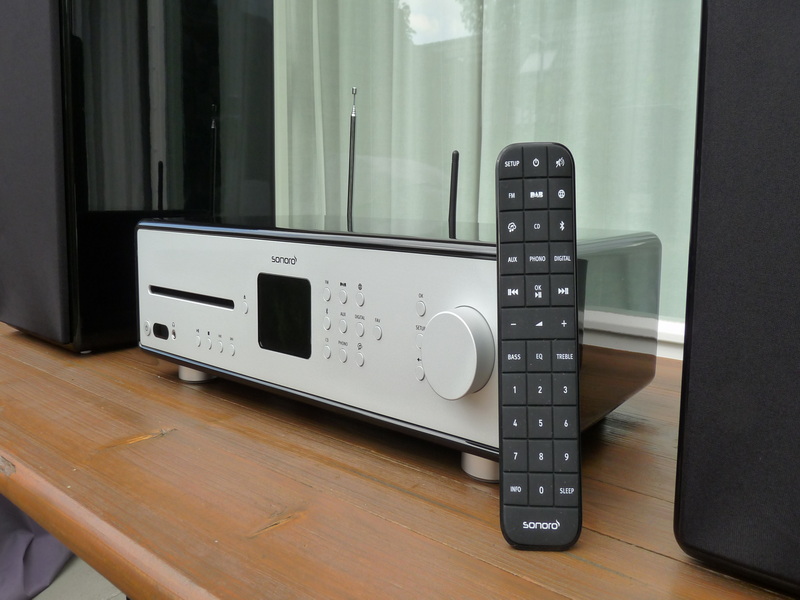
Both the Maestro and the Orchestras play transparent and neutral and do not really have a sound of their own. The NAD 7600 present in the test room combines wall-to-wall and pit-deep reproduction with a very small edge of warmth. The Orchestra clearly shows the differences between the Maestro and the 7600.
Sonoro Maestro and Orchestra: successful entry into the hi-fi component market
After a number of listening sessions, it is time to take stock. The Maestro is a well-built transparent and detailed sounding amplifier with enough power to also drive large floorstanders. The feature package offered is extraordinarily large. To a certain extent, the Maestro did not surprise us, but that is due to the fact that we have already had the Prestige in house. The Prestige has fewer connections and has built-in speakers, but the operation and functions of both devices are completely the same. The Maestro does just about exactly what we expected.
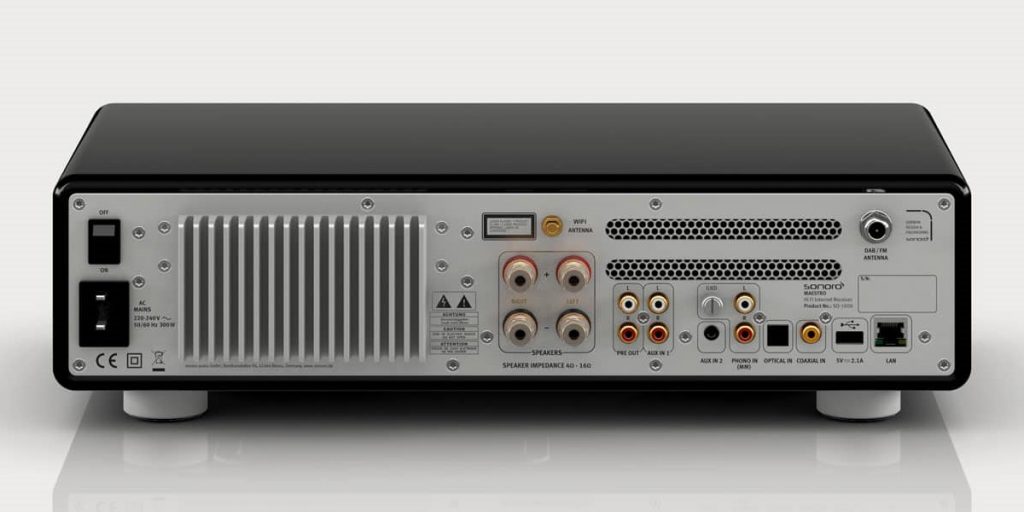
The big surprise of this test is the Orchestra. With a price of 500 euros each, the Orchestra is an exceptionally good performing loudspeaker. The bass reproduction is much better than the size and appearance of this first speaker from Sonoro suggests. History has taught us that some manufacturers have to go through a short or longer learning path before a good product is put on the market. The first product from a manufacturer is not always a successful product. Sonoro has apparently left nothing to chance and at first sight / hearing has paid a lot of attention to the development of the Orchestra. After completing the learning process, the Orchestra was launched. This first speaker from table radio manufacturer Sonoro is a successful product. The first steps in the market of individual hi-fi components make us curious about Sonoro’s possible next steps in this fairly crowded market. The established manufacturers of amplifiers and loudspeakers have at least gained a competitor.
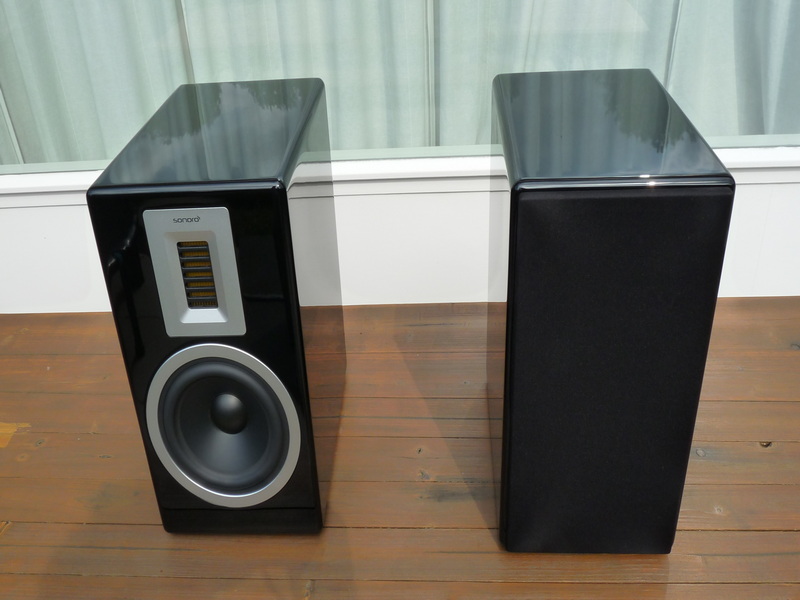
Sonoro Maestro and Orchestra: conclusion
With the Maestro and the Orchestra Sonoro has launched its first hi-fi components. Both components are well built and have a transparent and neutral sound. The Maestro’s feature package is very large and anyone who doesn’t want to play vinyl or tape doesn’t need anything else. The big surprise is the orchestra’s reproduction quality in all tonal areas. The entry into the hi-fi components market has been successful. The established brands have gained a serious competitor.
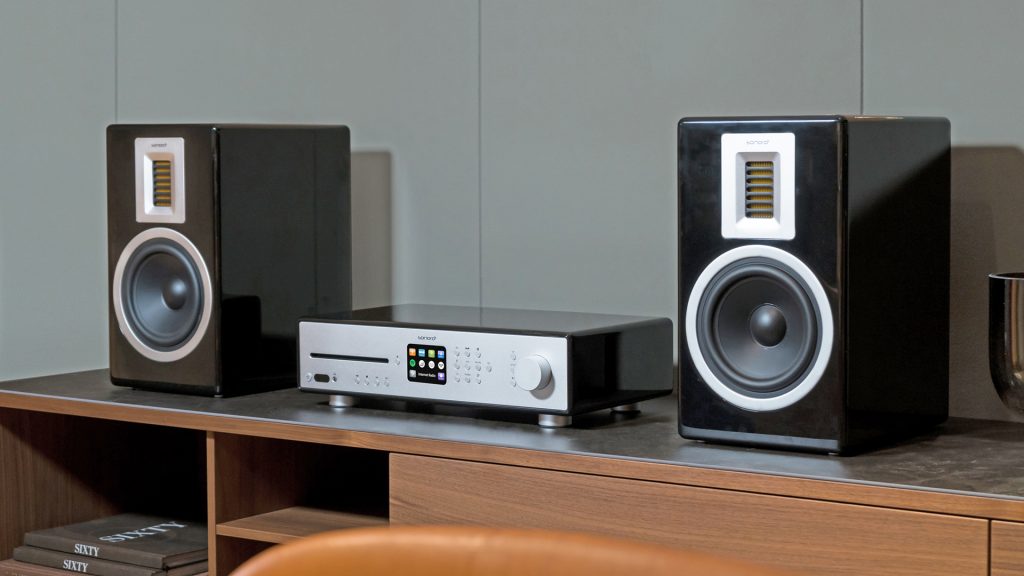
PLUS POINTS
- Solid and minimalist design
- Very good build quality
- Maestro has too many functions to list
- Transparent, smooth and neutral sound
- Maestro has a stutter-free display and operation
- Pleasant service
- Orchestra has very good bass response and an excellent price / quality ratio
MINUSES
- Maestro only supports USB sticks with FAT16 and FAT32 file system, not support NTFS storage media





